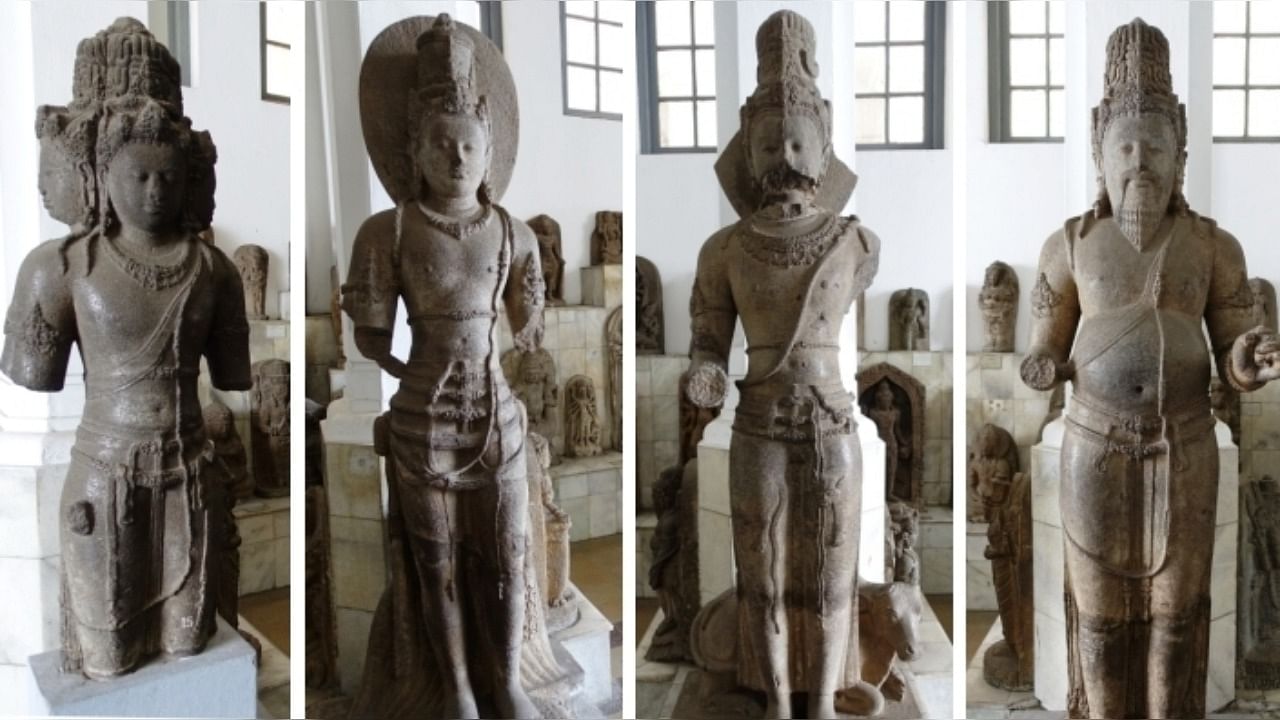
During my several visits to the Indonesian island Java, I have been drawn to the Museum Nasional Indonesia in Jakarta because of its rich collections of Hindu-Buddhist sculptures, inscriptions and ethnographic objects.
This museum is in a Dutch colonial building west of Merdeka Square near the Arjuna Wijaya fountain in central Jakarta.
In the front hall of the museum, the first sculpture that one comes across among numerous Hindu-Buddhist deities is a seated Ganesha statue from the eighth century AD.
The statue is made of andesite stone and was once enshrined in an ancient temple called Candi Banon in Central Java near Borobudur. In Bahasa language, Candi means temple, and Banon means brick. Statues were recovered from central Java in 1904 and then transferred to the Jakarta museum.
Four other slightly larger-than-life statues of Hindu deities in Candi Banon are Brahma, Vishnu, Shiva Mahadeva and Agastya. Because of their iconic nature, one can find images of the Ganesha and Vishnu statues on Indonesian postage stamps.
The seated Ganesh statue's feet touch together, displaying a Javanese element. The garments and girdles on the Vishnu statue resemble the Pallava-early Chola style of south India.
Leiden University's digital collection shows that a finely carved statue of Garuda was mounted behind the Vishnu statue, which had been lost. Unlike the other statues, the lower body of the Brahma statue had also been lost. The face of the Shiva statue is partly damaged, but the bull below him identifies him as Shiva. The statue of the Hindu sage Agastya has a pointed beard and a pot belly, reflecting a style that has its roots in Southern India.
Early records of excavation work at the Candi Banon site in 1904 suggest that it was located about two kilometres east of Borobudur in Central Java. It was a west-facing temple.
The disappearance of the main structure of the Candi Banon temple was reported by the Dutch historian N. J. Krom as early as 1923.
In a 1976 publication, deceased Indonesian archaeologist R. Soekmono placed the temple ruin location more precisely northwest of the existing Pawon temple on the west coast of the Progo river in Magelang regency of Central Java.
After my trips to this neighbourhood in Central Java, I found a rare picture of the excavated ruin in a 1987 publication of R. Soekmono. Probably this picture was taken much earlier, possibly in the early 1900s. Only the brick foundation of the temple, pedestal-like structures and architectural fragments are seen in this picture.
Art historians believe that Candi Banon was made of perishable organic materials like wood and was open on all sides like a pendopo or pendhapa (a cognate to Sanskrit mandapa). Essentially a pavilion-like construction with a square or rectangular base made of bricks with wooden pillars supporting the roof. The disappearance of the Candi Banon temple is believed to be due to erosion of perishable materials used in the temple's construction and the possible pilferage of bricks by locals.
Several Hindu deities and ritual objects were unearthed in Java in the last decade while digging for construction projects. A notable discovery in 2009 was a ninth-century AD Shiva sanctuary with Ganesha and linga in the courtyard of the library (pustakasala) of the Islamic University of Indonesia at Yogyakarta.
It was renamed from Pustakasala temple to Kimpulan temple after the name of the nearby village Kimpulan.
Unlike the Candi Banon temple, the remains of this Shiva temple are kept at their original site, and the ritual objects are displayed in an adjacent museum.
(The author is a New York-based writer with a deep interest in Asian art, architecture and cultures of maritime and land Silk Roads)